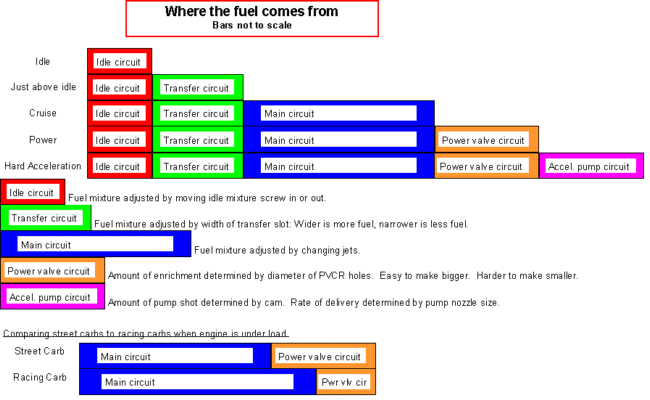http://www.holley.com/0-82751.asp
The Quickfuel carbs (and the others I imagine) are jetted pretty aggressively also, and don't have a secondary power valve at all (they up the rear jet sizes even further). If you have the secondaries open at all at anything other than WOT on those, its halfway to fouling plugs.
I really don't know why anyone would run a double pumper if they aren't going to be racing quite a bit. Street performance is going to be nearly identical-probably better with the vacuum secondary given the difficulty of properly tuning a double pumper - and the tuning and mileage on a vacuum secondary is going to be easier/better.
The big advantage to a double pumper in my book is that you can leave the line with all the throttle blades wide open. There's no analog for that on the street as all you'll do is blast the tires.
Maybe its "manlier" to run a double pumper? LOL
Steve

















